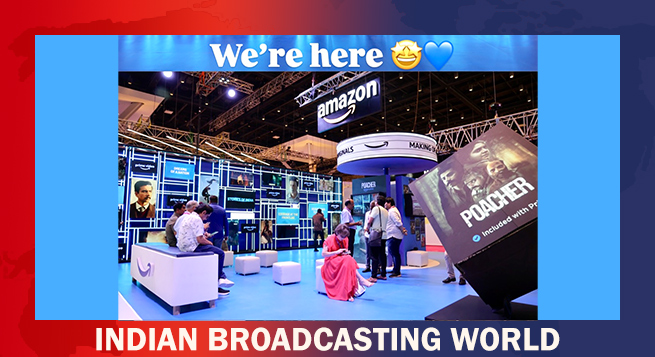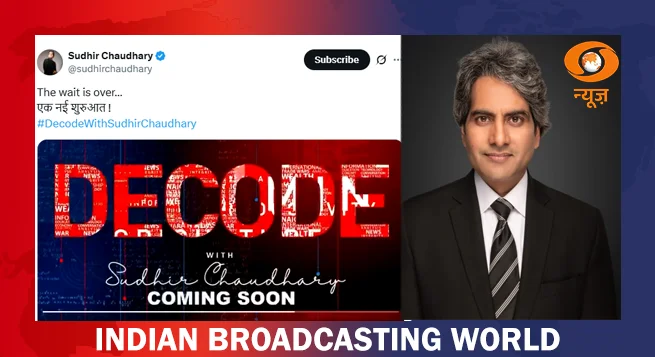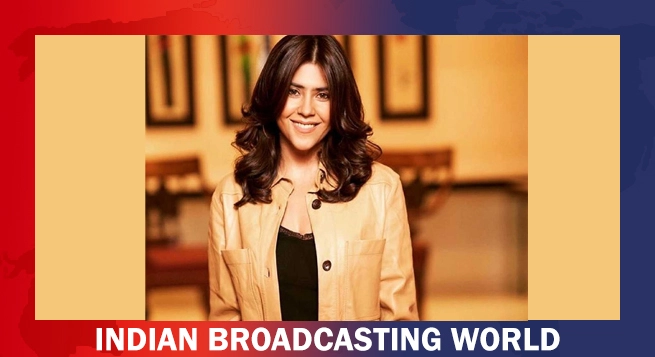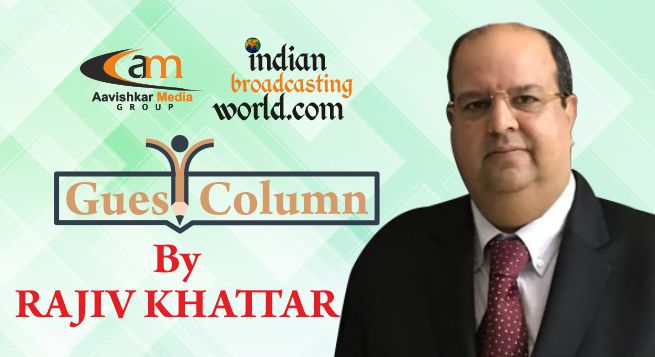By Rajiv Khattar
The C-band (3400-4200 MHz) has been historically used for satellite receivers and as such the
FSS Earth station equipment, namely the LNB, often operate in the entire 3400-4200 MHz
even though the operating signal might only be received in portions of the band often above
3.6 GHz.
The TRAI recommendations on 5G has opened up the 3300-3670 MHz band for 5G
deployments. The timing of the auction on these bands is not yet defined but is expected to
take place in Q2 of 2022 and deployment of 5G in this band to be in Q4 2022 or Q1 2023.
There is therefore a high risk of interference of existing FSS earth station receivers ( cable
headends receive antenna farms) from this new planned use of the band.

We focus on the impact of interference mechanisms ①/② and recommends a way to
address these issues.
Impact of interference mechanisms
Definition of the interference mechanisms
①: 5G in-band emissions (IBE) into FSS LNB in 3400-3670 MHz
②: 5G out-of-band emissions (OOBE) into FSS operating band above 3.7 GHz
Assessment of the impact for 1
Considering multiple IMT carrier transmitting towards the FSS receive antennas, the
simulation aggregates the carrier (C) and interference (I) levels input into the satellite receiver
LNB. The C+I levels are then compared to the LNB saturation point of -59dBm. The following
figure presents the exceedance of the LNB saturation level versus separation distance.

Conclusion: The FSS LNB can be saturated for distances of up to 36km. To avoid this impact,
filtering is needed. Discovery has a high number of earth station receiver in the band. 5G
stations could be deployed anywhere around these receive Discovery stations. Therefore,
filtering of up to 60-70 dB should be considered.
Assessment of impact for 2
Considering that the many broadcasters receive frequencies are above 3700MHz, there is
therefore about 30MHz of frequency separation with the 5G planned spectrum. According to
the European regulations, the OOBE limits 40MHz away from the band need to be below a TRP
(Total Radiated Power) level of -14dBm/5MHz. This power was considered along with a
maximum allowable I/N at the FSS receiver of -10dB (=0.4dB degradation of link). The
following figure presents the I/N level versus distance.

Conclusion: This worst-case analysis shows that there is a risk of interference into the FSS
receivers up to 20 km from 5G OOBE.
Recommendations
For case 1: filtering
Most filters in this range have cut-offs at 3.7 GHz. to obtain sharp responses with 60-70dB
attenuation.
For case 2: Exclusion zones and OOBE limits
Filtering will not work in this case as this would mean filtering the FSS wanted signal. The only
mitigation technique to prevent the impact of out of band emissions from degrading the FSS
earth station reception are: lower the out of band emission limits applicable to 5G deployments by the mobile Network Operator (MNO), coordination areas between MNO around FSS earth stations receive antennas to ensure protection from the interference.
To ensure that cable head ends continue to provide uninterrupted channels , the installation
of the band pass filters be started ,as deliveries are going to be having a long lead time and it is
yet to be seen who funds the cost, will it be the MNO operating the area, the broadcaster or
the cable head end by itself or will the government pitch in as they will be generating enough
revenue through the auction of the spectrum.
(Rajiv Khattar, the author, is a media industry veteran and a consultant, specializing in tech and satellite matters. His last assignment was as the South Asia head for a global satellite company, ABS. Before that he spent almost two decades with the Zee group in various leadership positions in Siti Cable [now Siti Networks] and Dish TV. In between, for a short while he also did a stint at Reliance Industries’ media unit. The views expressed are those of the author and Indianbroadcastingworld.com is not responsible for them, nor subscribes to them.)
 Ads on Prime Video are here! It starts in India from June 17
Ads on Prime Video are here! It starts in India from June 17  Multiplex chain PVR Inox quarterly loss widens
Multiplex chain PVR Inox quarterly loss widens  Sudhir Chaudhary unveils teaser of his new show ‘Decode With Sudhir Chaudhary’ on Doordarshan
Sudhir Chaudhary unveils teaser of his new show ‘Decode With Sudhir Chaudhary’ on Doordarshan  NBF advises TV news channels to stop flashing ‘War Breaking’ tagline
NBF advises TV news channels to stop flashing ‘War Breaking’ tagline  ZEE Kannada’s ‘Sa Re Ga Ma Pa’ finale to air on ZEE5
ZEE Kannada’s ‘Sa Re Ga Ma Pa’ finale to air on ZEE5  Avinash Tiwary, Medha Shankr team up for ‘Ginny Weds Sunny 2’
Avinash Tiwary, Medha Shankr team up for ‘Ginny Weds Sunny 2’  Gameskraft halts Pocket52 operations for strategic revamp
Gameskraft halts Pocket52 operations for strategic revamp  Ekta Kapoor drops hint on return of ‘Kyunki Saas Bhi Kabhi Bahu Thi’
Ekta Kapoor drops hint on return of ‘Kyunki Saas Bhi Kabhi Bahu Thi’  ‘Captain America: Brave New World’ to stream on Disney+ from May 28
‘Captain America: Brave New World’ to stream on Disney+ from May 28 







